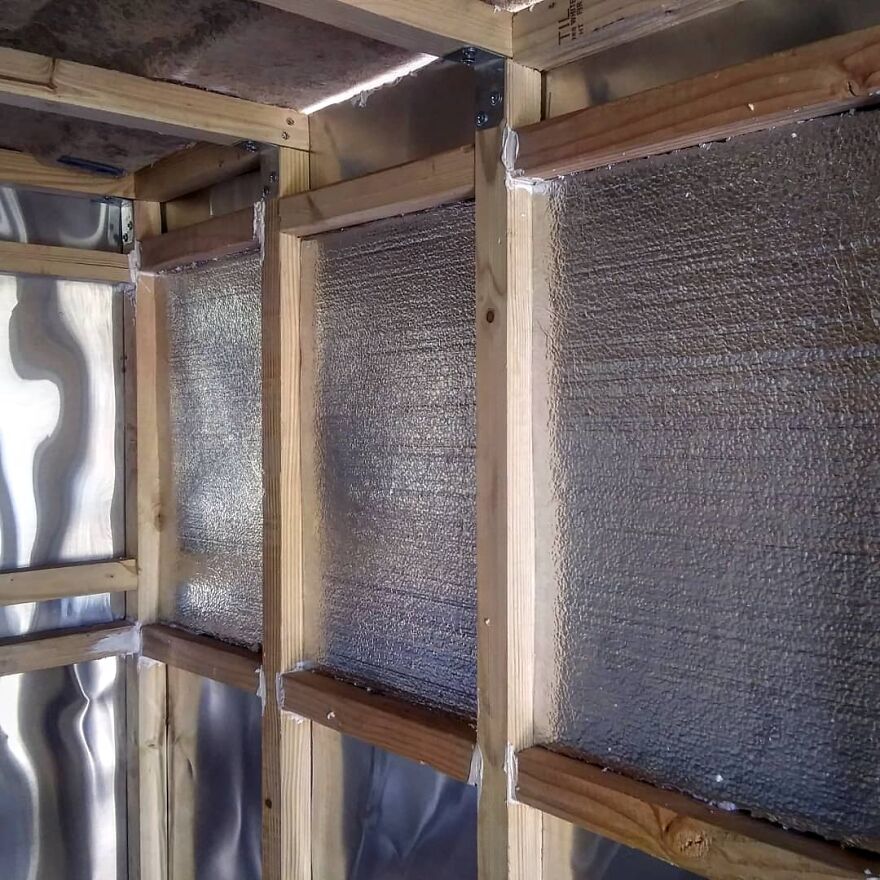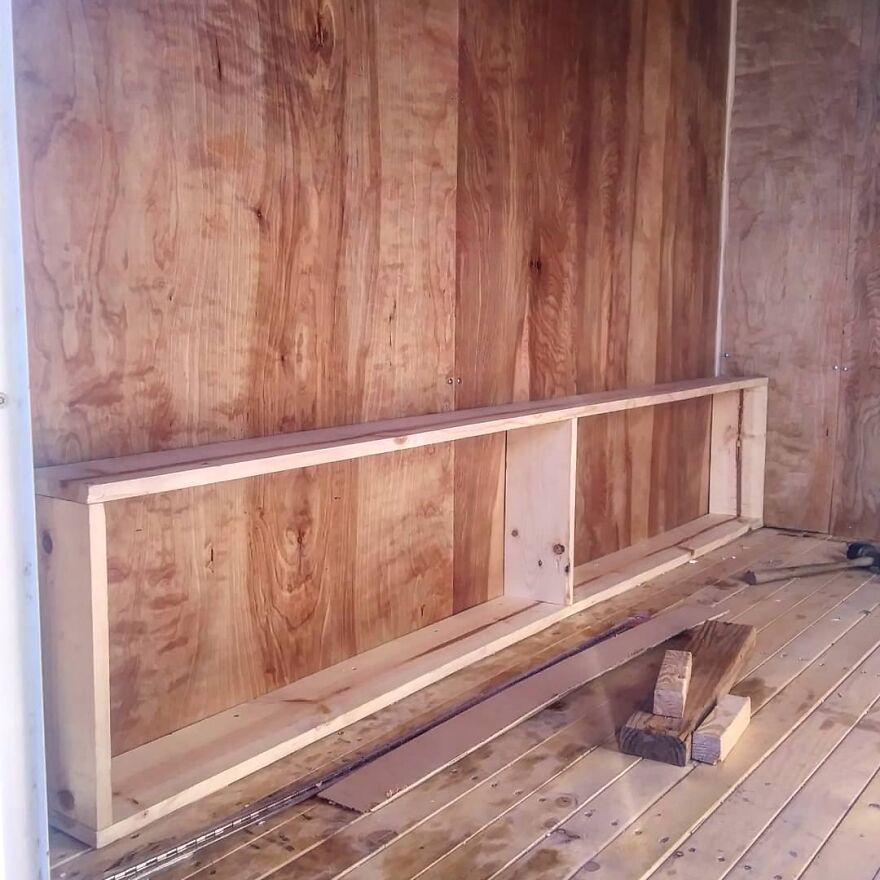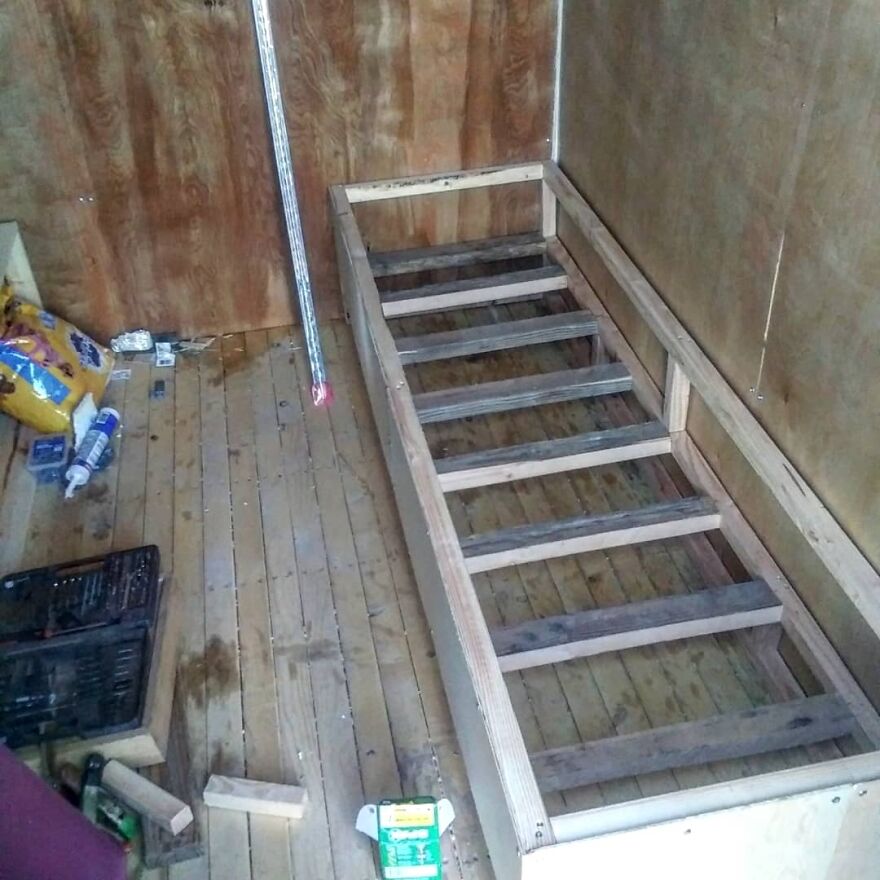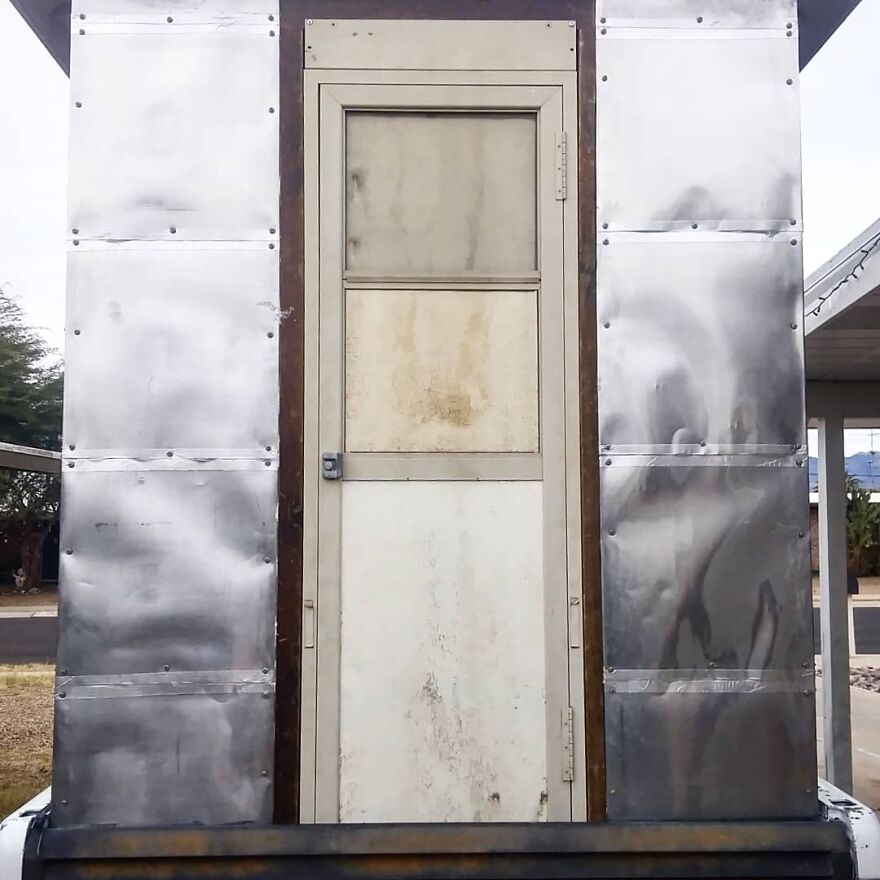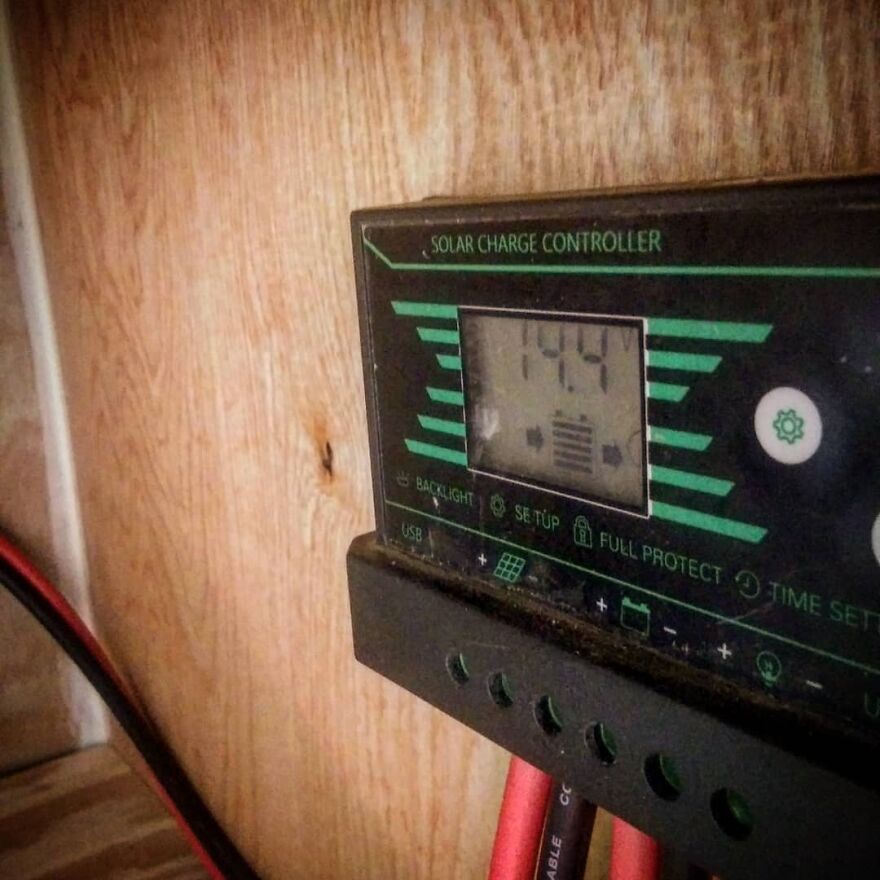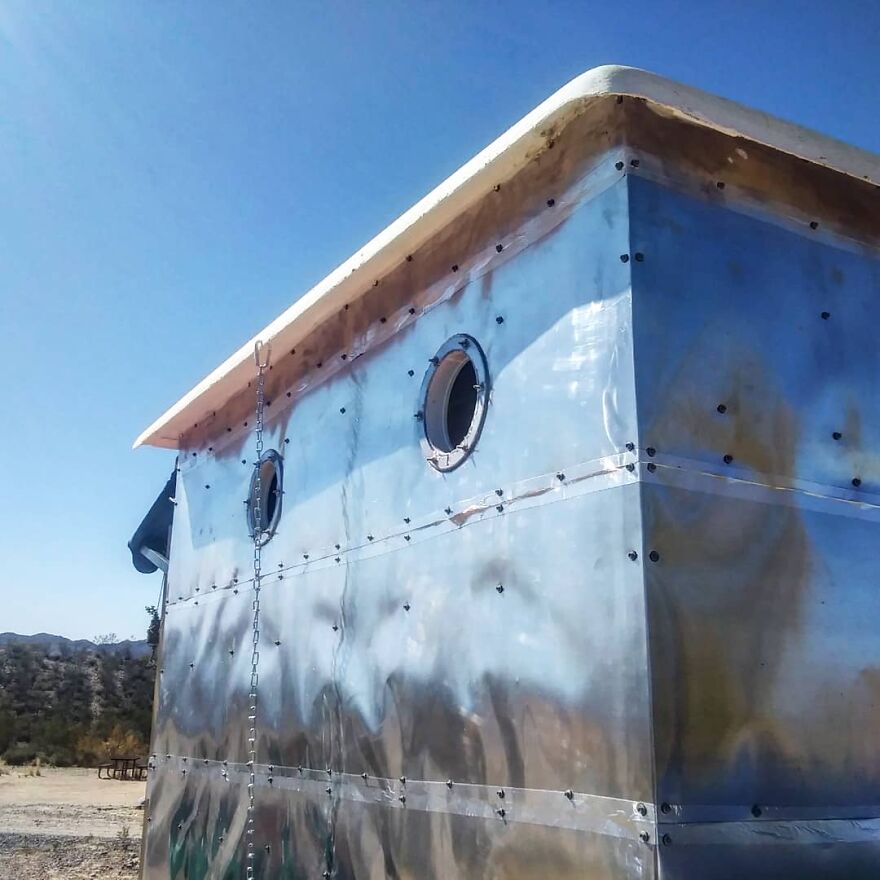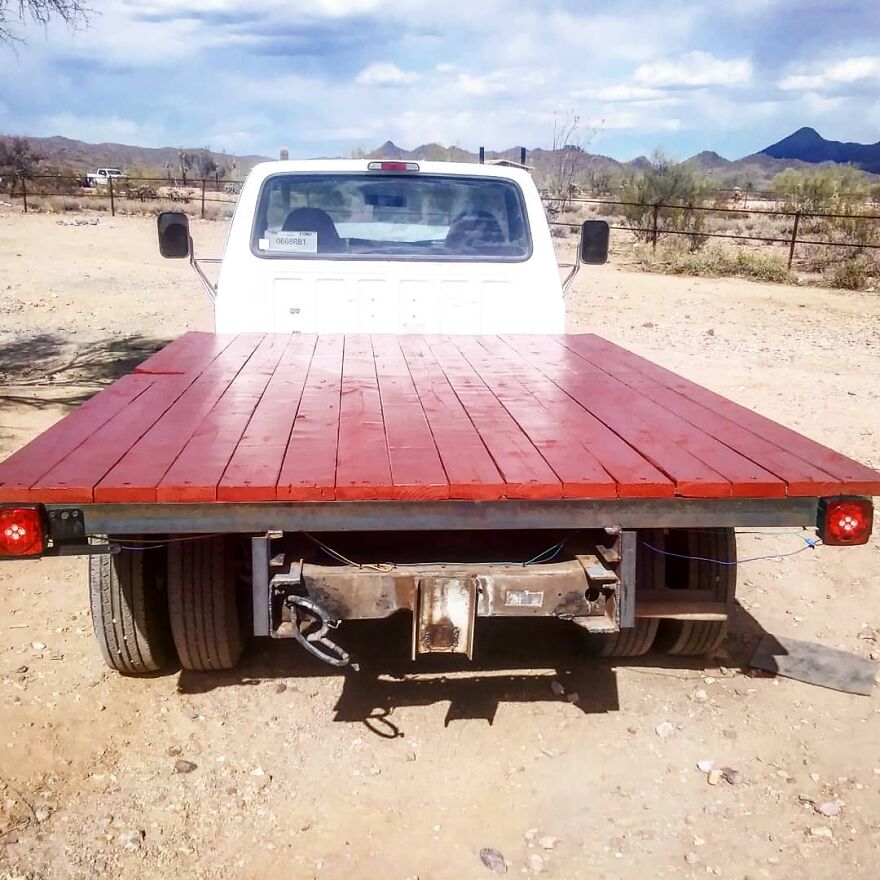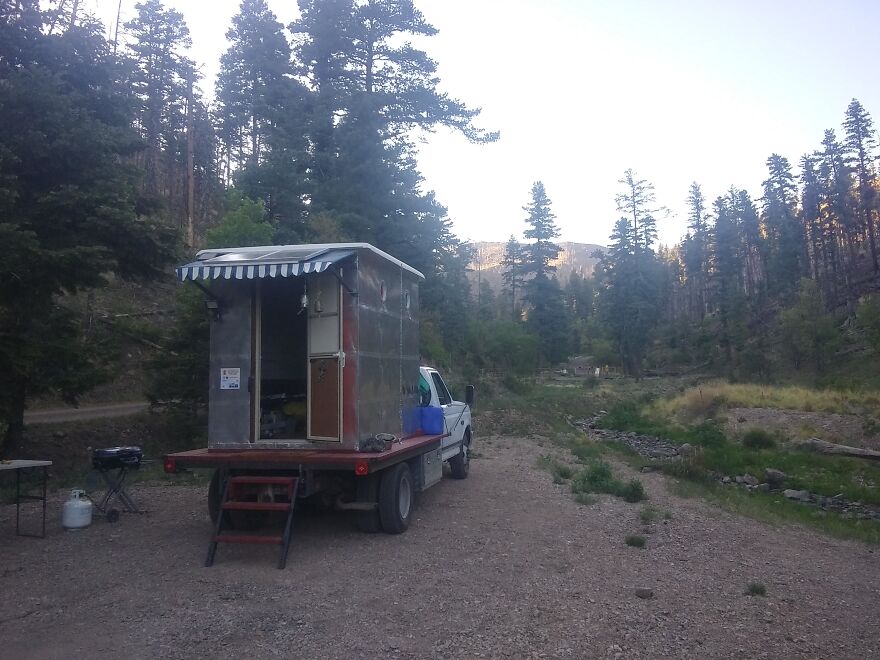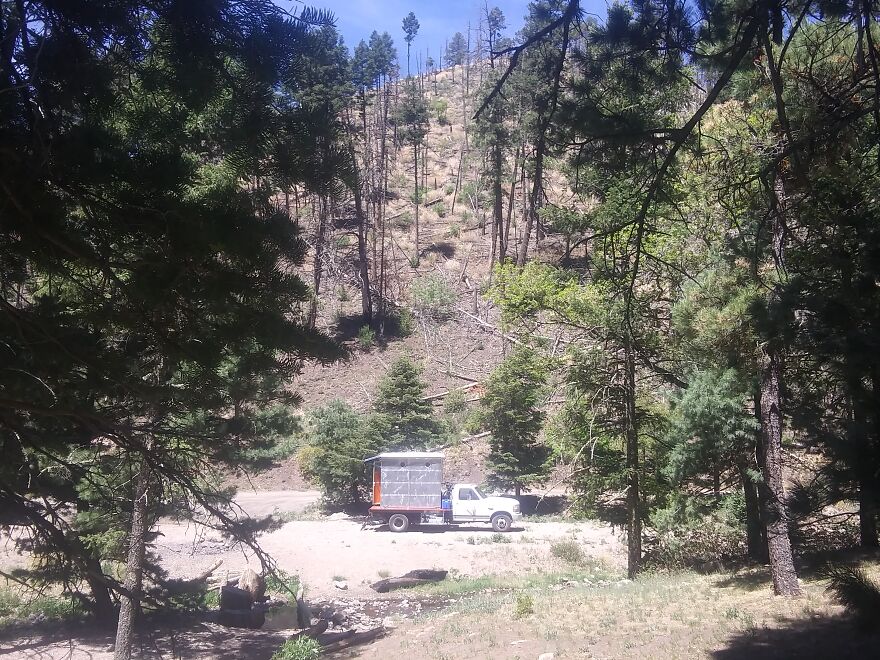We’re no strangers to camping. In fact, we’ve been living almost exclusively on the road, frequenting BLM and national forest land, since 2018, and have gone through four camping units in that time. After a particular job that had us planted in one spot for three months, we hit the road (mostly oblivious to what was on the horizon) right when the effects of the pandemic were beginning to grip the nation and the world: March 2020.
But we wanted something better than the cheaply built, often problematic RVs we were used to. We wanted something with hard sides (for security) but not too heavy and bulky, as that would be a burden to haul down the road and would limit where we could go.
More info: youtube.com | Instagram
A generous pile of 2×2 lumber – we wound up buying quite a bit more
Having a truck already, we worked with what we had. One of the bigger lessons I’ve learned in our years on the road is to not focus on what you don’t have, but to work within constraints and “do what you can, with what you’ve got, where you are.” (That’s a quote from Squire Bill Widener, commonly attributed to Theodore Roosevelt.)
Framing it in
We had just recently sold our last “camper”, which was a basic fiberglass truck pod designed for contractors and converted by us for camping. It was low profile and just large enough for a bed and some storage.
Now it was time for something that suited us better.
We wrapped the studs with aluminum flashing, five rolls in total
The seams were taped with aluminum waterproofing tape
What we made is not perfect. We’re not expert builders. But my wife and I combined our knowledge of building learned, in part, over our younger years of helping our parents with various home remodeling projects, and built something we hoped we could be happy with.
The circumstances under which we built our truck camper were not ideal…to say the least. We had no level ground.
Lightweight foam insulation was inserted and glued between every 2×2
Adding the bookcase; by this time, we moved to a friend’s house to continue the work
It was north of Tucson, a BLM site with nothing but palo verde, scrub brush, some well-pecked saguaros, and a whole lot of dust. Military planes flew over every day, along with some private gliders which circled silently overhead; even the occasional paratroopers-in-training were dropped at high altitude somewhere on the other side of Interstate 10, barely visible in the midday sun.
This is the framework for our bench storage
The fifty watts of solar power we had coming in was not enough to support power tools beyond replenishing some 12V batteries for my drill that were old, tired, and hardly held a charge. Naturally, all woodcuts were made by hand.
The 2×2 lumber at Home Depot was crooked, knotty, and prone to splitting.
Our budget was very limited due to hardships that I could fill a book discussing.
We were given this cool vintage RV door and I framed it to fit using stained wood from an old bed frame
But eventually, we framed in the camper and had a workable shell. At that point, it was actually light enough to lift into the back of our old Ford truck.
As time went on, people chipped in with materials and various help (you know who you are, and we’re forever thankful for your help).
A beautiful sunset caught during the build
100 watts of solar attached to our signature blue awning, made from a metal futon we bought for $20
Eventually, the pieces came together and we had something workable. We upcycled a ton of materials and leveraged our limited resources, forcing ourselves to work almost exclusively with what we had available to us, only purchasing things deemed absolutely essential.
What you see in the video (link at the end) is a tour of where we’re at at the present time. We have plans for more, but the project has reached a point where we’re happy to share it with those searching for ways to live simply and inexpensively, and to build their own rigs on a very limited budget.
Always good to see that free electricity coming in!
Finally, the camper becomes more homey; the left “wall” is the bottom of the folding bed
The couch and countertop
We later added two porthole windows for light and ventilation
The “New” truck with a freshly painted wooden flat bed
Then we added some steps
We hope you can glean some ideas for your own homebuilt project because doing it yourself will ultimately save you a lot of money, give you the personal nuances you want, and hopefully yield the longevity you are unlikely to get from most anything on the RV market.
Wild horses visiting our back door
Camping in the mountains at a new favorite spot
Another of the biggest lessons I’ve learned and taken to heart: the things most worth doing are also the most difficult; bringing something good to fruition can and will break you down to the point of wanting to utterly quit. I’ve felt this many times. But you keep going, it gets done, and you’re glad (and likely amazed) you did it. Make no mistake: living on the road is NOT easy. Just behind all the good tans, beach campfires, immaculate RV interiors, and luminous Instagram smiles is a potentially imminent train wreck. Vehicles break down, curtains get stained, funds are depleted, plans fail, people fail, the weather foils everything (albeit, these are things that happen in any life scenario). But van life, bus life, and truck life can be a whole lot simpler and cheaper way to live. And if nothing else, you can’t beat having the ability to change your backyard (and your neighbors) whenever you want.
Some perspective…tiny living in a big world
Source link : https://www.boredpanda.com/we-built-our-camper-from-scratch-out-in-the-desert





